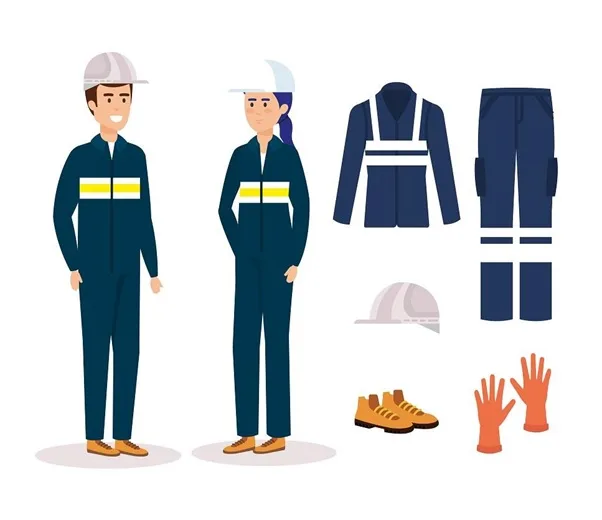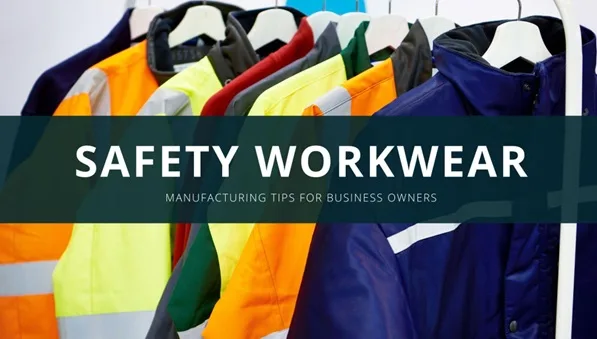In today’s industries, safety workwear plays a crucial role in protecting employees from potential hazards. As a business owner, manufacturing high-quality safety workwear is essential to ensure the well-being of your workforce. When starting a safety workwear manufacturing unit, business owners might also want to consider availing one of the best LLC services to protect their personal assets and ensure smooth business operations.
In this blog post, we will provide you with in-depth tips and guidelines to help you navigate the process of safety workwear manufacturing successfully for your company workers or for your business.
1. Understanding Safety Workwear Manufacturing
To start off, let’s delve into the fundamentals of safety workwear manufacturing. Safety workwear refers to specialized garments and protective equipment designed to minimize the risks associated with specific job roles and industry requirements. By complying with safety regulations and standards, business owners can ensure that their employees are adequately protected in the workplace.
2. Planning and Designing Safety Workwear

Before diving into the manufacturing process, thorough planning and designing are crucial steps. Conduct comprehensive research on industry needs and safety regulations to determine the specific requirements for your workwear. Collaborate with safety experts, designers or printing experts like Teemiprint, and manufacturers to develop a prototype that encompasses functionality and comfort. Testing the workwear in real-world scenarios will enable you to identify areas for improvement.
3. Selecting Suitable Fabrics and Materials
The choice of fabrics and materials used in safety workwear is pivotal for durability and protection. Consider various options based on your industry’s requirements, such as flame resistance, breathability, and durability. Different tasks may demand specific reinforcements, padding, or reflective elements to ensure maximum safety for your employees.
4. Implementing Safety Features
Integrating effective safety features into workwear is essential to minimize risks. Whether it’s incorporating impact-resistant materials or reflective strips, these features play a crucial role in enhancing safety. Ergonomic design is equally important to provide ease of movement and comfort for employees throughout their work shifts. Additionally, specialized features like chemical resistance or electrical insulation may be necessary based on the specific hazards present in your industry.
5. Quality Control and Manufacturing Process
Maintaining high quality during the manufacturing process is imperative to produce reliable safety workwear. Establish strict quality control measures for both raw materials and manufacturing procedures. Ensure compliance with safety standards throughout the production process. Regular inspections and testing of finished products will help identify any defects or shortcomings that need to be addressed promptly.
6. Sizing, Fit, and Customization
Workwear that fits well and is properly sized is crucial for both comfort and safety. Develop comprehensive sizing charts and guidelines to ensure the right fit for your employees. Consider variations in body types and personal preferences to accommodate a diverse workforce. Additionally, offering customization options for branding and identification purposes can further enhance the sense of ownership and pride among your employees.
7. Care and Maintenance Recommendations
To maximize the lifespan of safety workwear, proper care and maintenance are vital. Provide clear guidelines on washing and drying methods that preserve the integrity of the garments. Regular inspections should be conducted to identify any signs of wear and tear, prompting timely replacements. Emphasize the importance of maintaining workwear in optimal condition to ensure ongoing protection for your employees.
8. Supplier Selection and Collaboration
Choosing the right supplier is a critical decision in the safety workwear manufacturing process. Thoroughly research and vet potential suppliers based on their capabilities, certifications, and track record. Establish a collaborative relationship with the chosen supplier to ensure seamless communication and a shared commitment to quality and safety.
Wearce is one of the most popular and best safety workwear manufacturers in China. They provide worldwide shipping and within a very short turnaround time. You can contact Wearce to know more about their safety workwear manufacturing process.
Lucrative Business Opportunities in the Safety Workwear Industry
In recent years, the significance of safety workwear has grown exponentially across various industries. With a rising focus on workplace safety and legal requirements, businesses that offer safety workwear have emerged as vital players in ensuring employee well-being. Some best opportunities are described below.
Expanding Industries and Compliance Regulations
With industries such as construction, manufacturing, healthcare, oil and gas, transportation, and more experiencing substantial growth worldwide, the demand for safety workwear is on the rise. Moreover, stricter compliance regulations mandated by governments further increase the need for businesses to prioritize employee protection through appropriate protective gear.
Diverse Product Range
The safety workwear industry encompasses a wide range of products including high-visibility clothing, protective footwear, gloves, helmets, eyewear, respiratory masks, and more. Entrepreneurs can capitalize on this diversity by exploring niche markets or offering comprehensive solutions to cater to various industries’ specific needs.
Customization and Innovation
To capture market share effectively and stand out from competitors, it is crucial for safety workwear businesses to emphasize product customization and innovation. Tailoring products to meet individual company requirements can lead to long-term partnerships with clients seeking personalized gear for their workforce. Additionally, staying up-to-date with technological advancements allows entrepreneurs to introduce innovative features that enhance comfort, durability, and functionality.
E-commerce Opportunities
E-commerce has revolutionized numerous industries globally by widening customer reach and streamlining distribution channels. Entrepreneurs venturing into the safety workwear sector can leverage online platforms to showcase their products effectively. Establishing an intuitive e-commerce store enables businesses to attract local and international clientele while providing them with an easy ordering process backed by secure payment gateways.
Corporate Social Responsibility (CSR) Initiatives
As corporate social responsibility gains prominence among businesses, developing sustainable safety workwear options can be a lucrative opportunity. Companies that prioritize environmental sustainability by utilizing recycled materials or investing in renewable energy sources can align themselves with environmentally conscious clients and attract a growing customer base.
Rental and Maintenance Services
In addition to selling safety workwear products, there is an emerging demand for rental and maintenance services in this sector. Many companies prefer renting safety gear on a project-to-project basis rather than investing in purchasing and maintaining their inventory. Entrepreneurs can tap into this opportunity by providing high-quality rental services combined with regular maintenance programs to ensure client satisfaction.
Education and Training
Safety workwear businesses can complement their offerings by providing education and training programs focused on the correct usage and care of safety gear. By educating employees about the importance of proper protective equipment and its role in preventing injuries, businesses can establish themselves as trusted industry experts while enhancing overall workplace safety standards.
Conclusion
Manufacturing high-quality safety workwear requires careful planning, attention to detail, and adherence to safety standards. By following the tips and guidelines outlined in this article, business owners can ensure that their employees are provided with reliable protection in the workplace. Investing in safety workwear manufacturing not only enhances the well-being of your workforce but also contributes to a positive and safety-focused work culture.
Frequently Asked Questions (FAQs)
Are there industry-specific safety requirements for workwear manufacturing?
Yes, different industries have unique safety requirements based on the specific hazards involved. It’s crucial to research and comply with these industry-specific regulations.
How can I ensure the durability of safety workwear?
Selecting high-quality fabrics, implementing robust manufacturing processes, and conducting regular quality control inspections are key factors in ensuring the durability of safety workwear.
What are some common mistakes to avoid in safety workwear manufacturing?
Some common mistakes include overlooking proper sizing and fit, neglecting to test prototypes in real-world scenarios, and compromising on the quality of materials used.
Is it necessary to offer customization options for safety workwear?
Customization options, such as branding and identification, can foster a sense of ownership and pride among employees. However, it is not mandatory and depends on your business’s specific needs and preferences.
How often should safety workwear be inspected and replaced?
Regular inspections should be conducted to identify any signs of wear and tear. The frequency of replacements depends on the level of usage and the specific industry requirements.


